Contents
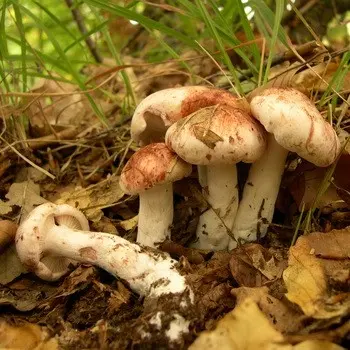 The usual structure of the fungus is the underground part (mycelium or mycelium) and the aboveground (leg and hat). Moreover, in most cases, the leg is attached to the hat strictly in the center. But there are also representatives of the Mushroom Kingdom who do not have a leg at all, or this part of them is not attached to the center of the hat, but is sharply shifted to the edge. You can find a description of these varieties on this page.
The usual structure of the fungus is the underground part (mycelium or mycelium) and the aboveground (leg and hat). Moreover, in most cases, the leg is attached to the hat strictly in the center. But there are also representatives of the Mushroom Kingdom who do not have a leg at all, or this part of them is not attached to the center of the hat, but is sharply shifted to the edge. You can find a description of these varieties on this page.
Mushrooms without legs with a round white cap
Крепидот изменчивый (Crepidotus variabilis).
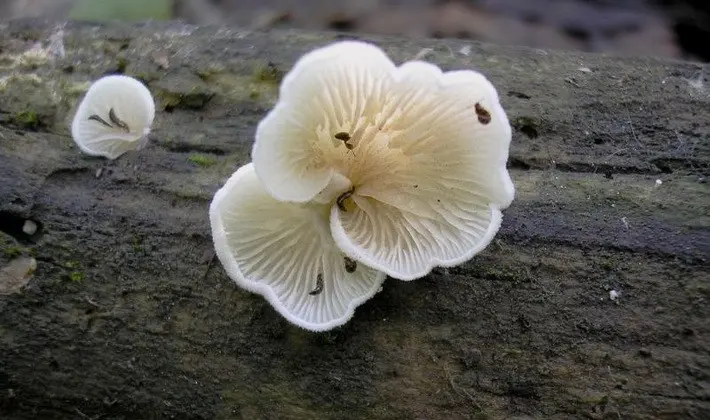
Fibrous family (Inocybaceae).
Season: summer autumn.
Growth: singly or in small groups in the form of tiled fruiting bodies.
Description:
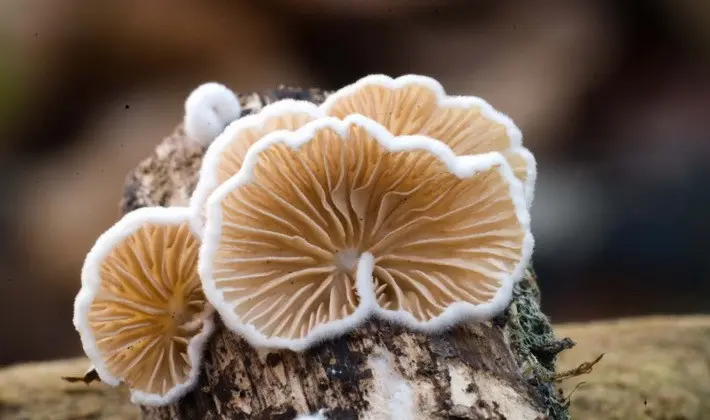
The surface of the cap is felt-pubescent, sometimes smooth on the edge, white or light yellow.
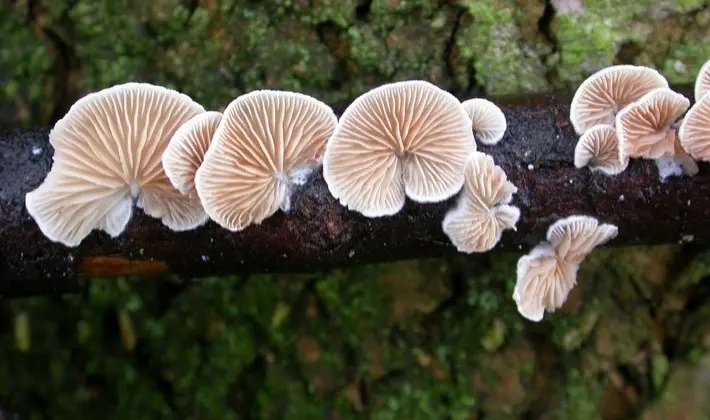
The plates are adherent, relatively frequent, wide, light.
The cap is convexly prostrate, kidney-shaped, rounded, shell-shaped or lobed.
The edge of the cap is tucked up, wavy or lobed, striped.
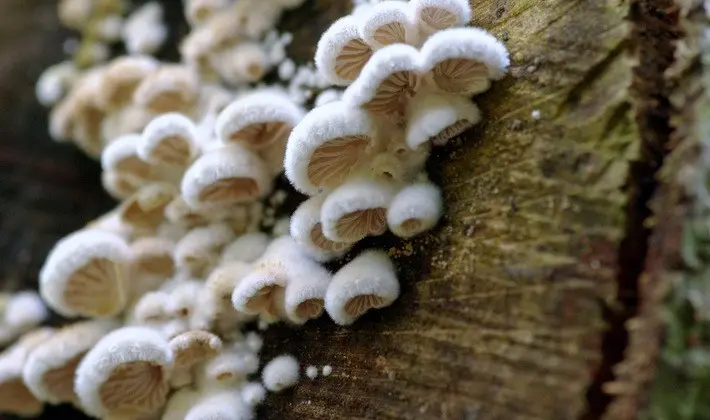
The flesh is white, with a sweetish taste.
This round, stemless, white mushroom has no nutritional value due to its small size.
Ecology and distribution:
Растет на отмерших ветвях и остатках древесины лиственных, реже хвойных пород, на мелких растительных остатках.
Soft crepidot (Crepidotus mollis).
Fibrous family (Inocybaceae).
Season: mid-May – end of October.
Growth: in groups.
Description:
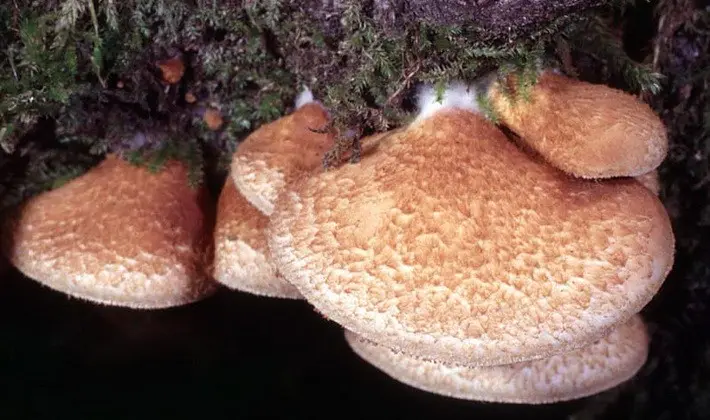
The cap is round, sessile, at first reniform, later shell-shaped, yellowish, smooth or finely hairy.
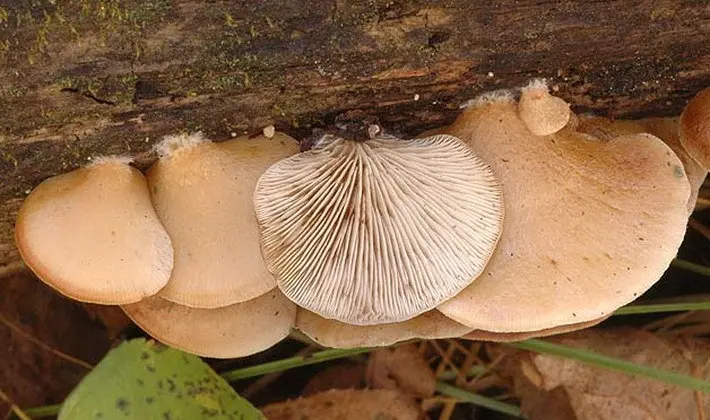
The pulp is soft, white or light, odorless.
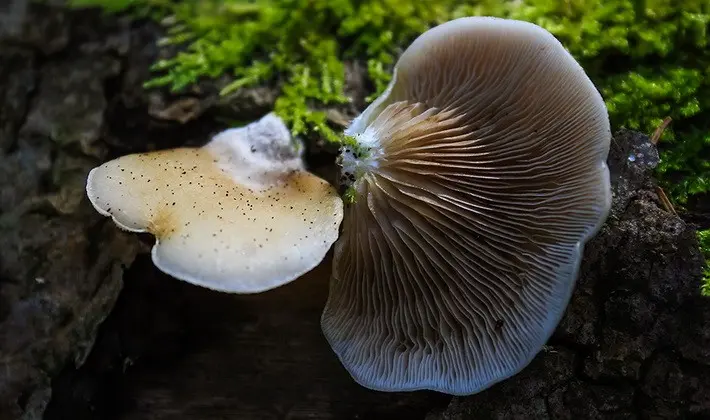
The stalk is lateral, rudimentary, often absent.
The plates are frequent, forked, fan-shaped diverge from the place where the cap is attached to the trunk, light.
It is an edible round mushroom without a stalk or with a low quality side stalk. Used fresh (after boiling) or dried.
Ecology and distribution:
Grows on dead wood, hardwood branches, rarely on conifers. Sometimes this stemless mushroom is found on treated wood and in hollows of living trees.
Oyster mushroom (Pleurotus ostreatus).
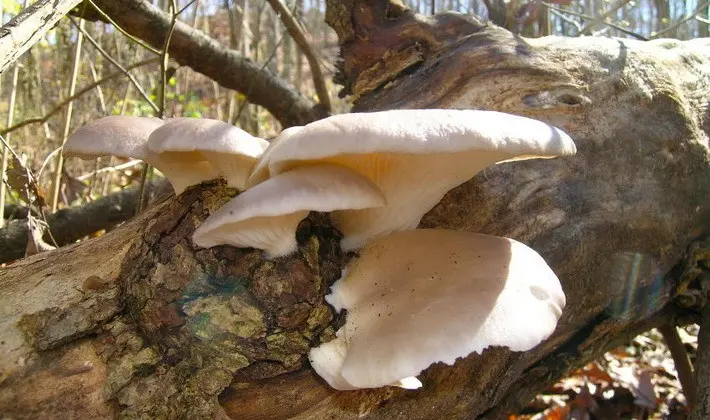
Family: Mycenaceae (Mycenaceae).
Season: September – December.
Growth: groups, often in dense bundles of 30 or more fruiting bodies, growing together at the base; less often alone
Description:

The plates are rare, thin, descending along the stem, with bridges near the stem, whitish, turning yellow with age.
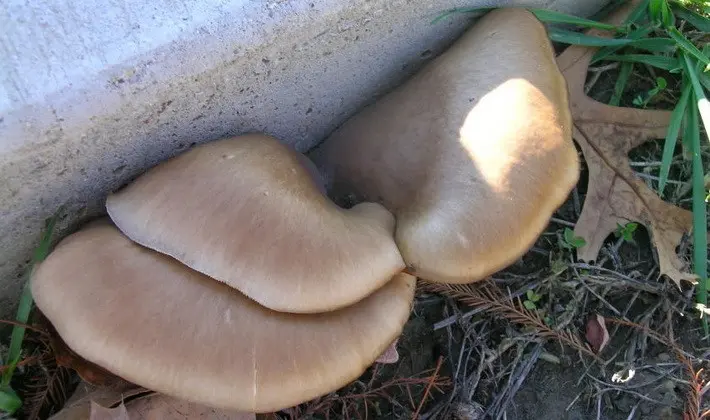
The cap is fleshy, solid, rounded, with a thin edge; the shape is ear-shaped or almost round (especially in the stem).
The pulp is white, dense, in young mushrooms soft and juicy, later hard and fibrous.
The surface of the cap is smooth, glossy, often wavy.
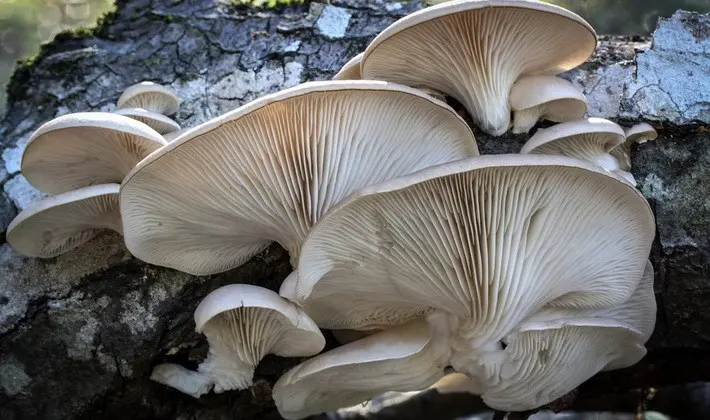
The stalk is short, sometimes almost imperceptible, dense, continuous, eccentric or lateral, narrowed towards the base, often curved.
In young mushrooms, the cap is convex, and with a wrapped edge.
Delicious edible mushroom. It is better to collect young white round mushrooms without stems (cap diameter up to 10 cm); in old mushrooms, the stem is inedible. It is used universally – fresh in soups and second courses, in pickles, etc.
Ecology and distribution:
Grows on stumps, deadwood, dead or alive, but weakened, various deciduous trees (oak, birch, mountain ash, aspen, willow), very rarely – conifers in deciduous and mixed forests, parks and gardens. Cultivated on an industrial scale in many countries, including Our Country. Under artificial conditions, it grows on almost any substrate containing cellulose and lignin – sawdust, shavings, bark, paper, straw, reeds, sunflower husks.
Other mushrooms with displaced legs or without them at all
Ear-shaped lentinellus (Lentinellus cochleatus).
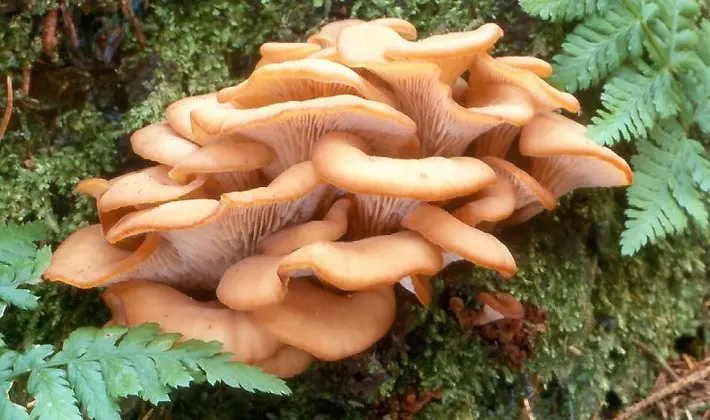
Auriscalpiaceae family.
Season: summer autumn.
Growth: in groups, often in bunches.
Description:
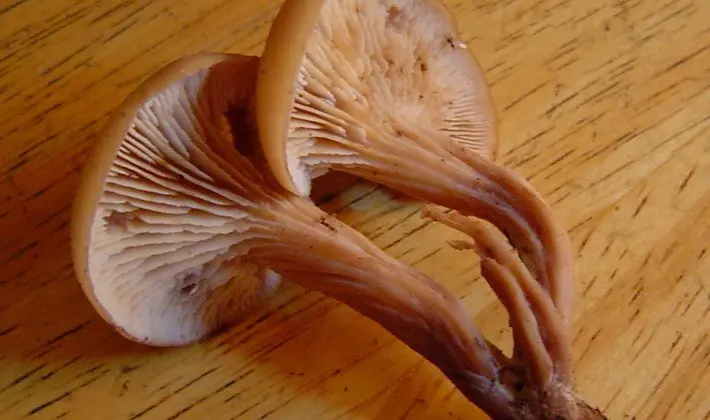
Legs of different shades of brown, lateral, hard but elastic, often growing together.
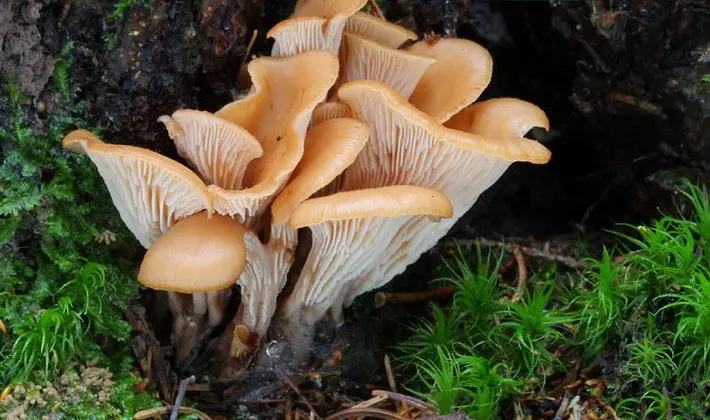
The plates are uneven, lighter than the caps, descending along the stem.
The flesh is hard, whitish, with a strong smell of anise.
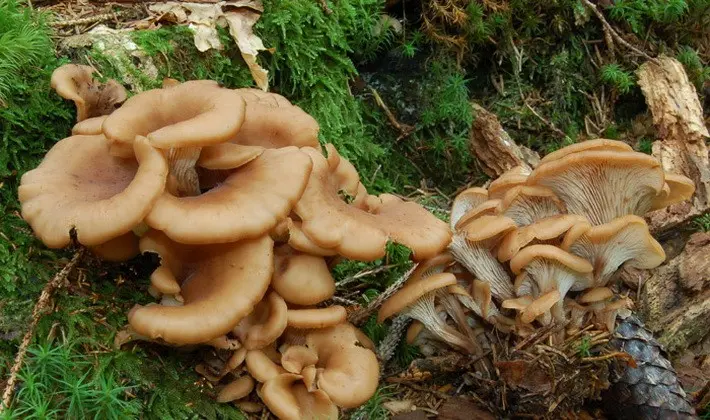
Hats are yellowish or reddish brown, very different shapes, hard, thin.
The mushroom is inedible due to its toughness and strong smell.
Ecology and distribution:
Grows on rotten tree stumps.
Autumn oyster mushroom (Panellus serotinus).
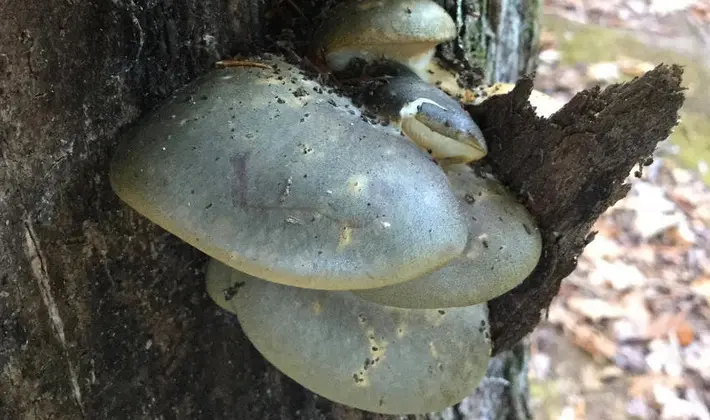
Family: Mycenaceae (Mycenaceae).
Season: end of September – December.
Growth: in groups.
Growth: in groups.
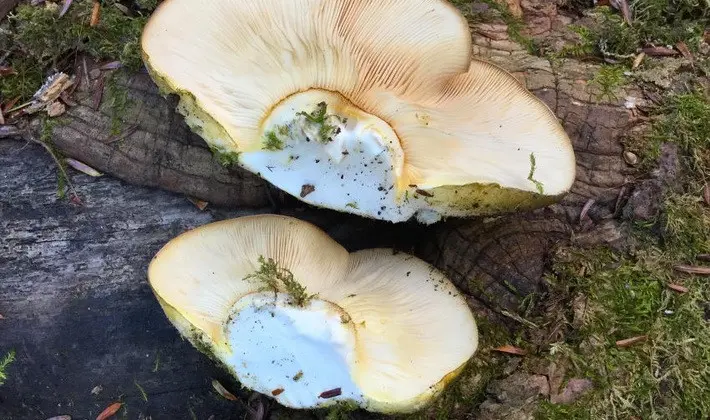
The pulp is dense, light, with age it becomes hard and rubbery.
The plates are frequent, adherent or slightly descending, yellowish, darkening with age.
The color of the hat is a wide variety of dark shades.
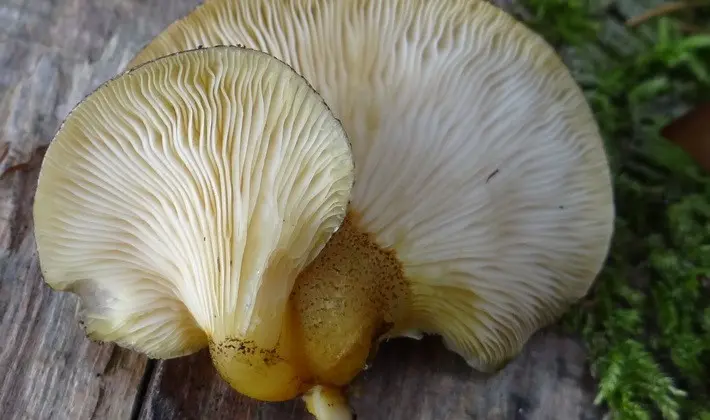
The leg is lateral, sometimes almost absent, finely scaly, ocher or yellow-brownish.

The cap is fleshy, finely pubescent, slightly mucous, shiny in wet weather.
Edible when young; Mature mushrooms are tough and have thick skins. After boiling it can be used in second courses and pickles.
Ecology and distribution:
It grows in deciduous and mixed forests, on mossy deadwood of deciduous species. Able to bear fruit during thaws at temperatures from +5°C.
Oyster mushroom (Pleurotus cornucopiae).
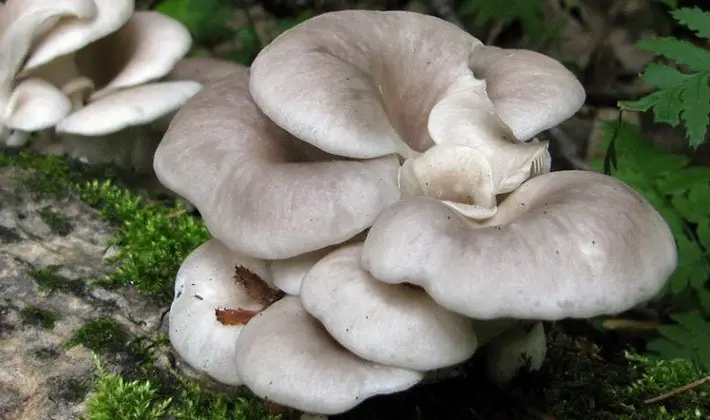
Family: Mycenaceae (Mycenaceae).
Season: end of May – October.
Growth: in groups.
Description:
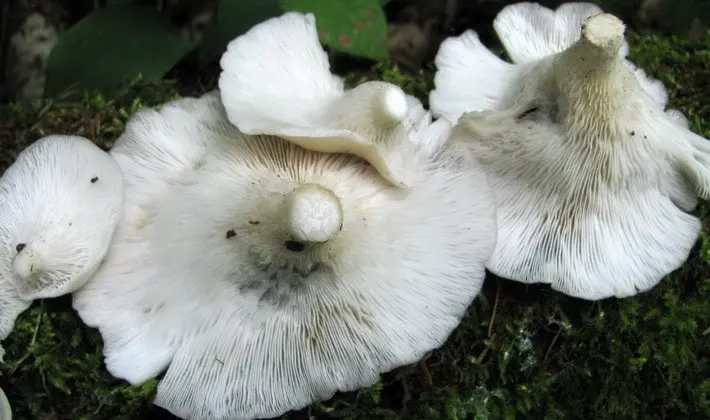
The flesh is white, fleshy, hardening with age, with a slight mealy smell.
Records descending far along the stem, sparse, narrow, whitish.
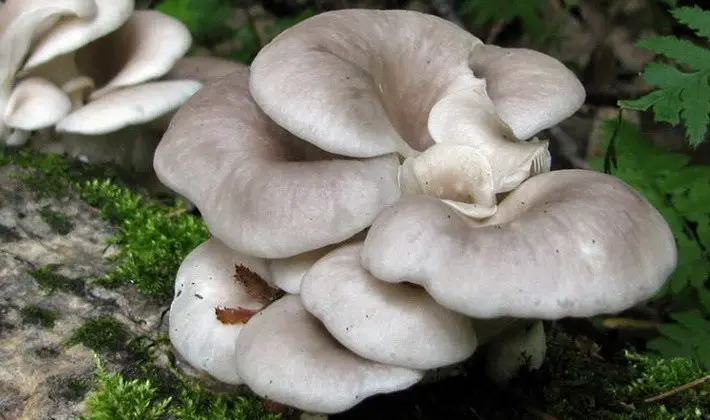
The hat is depressed, funnel-shaped, horn-shaped, fawn or pale yellow-ocher. The edge of the cap is often wavy.
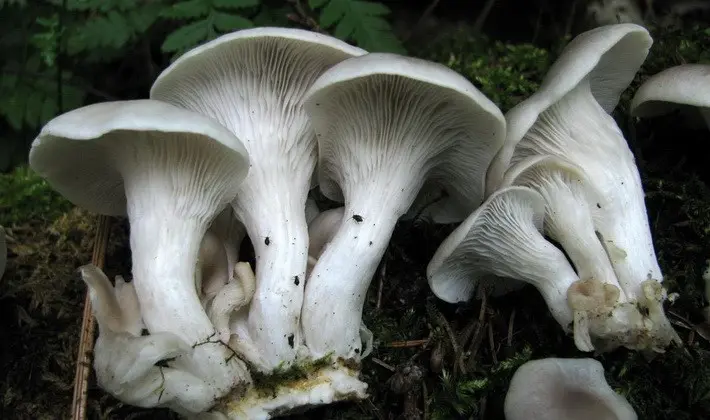
The stalk is eccentric, rarely central or lateral, narrowed towards the base, solid, light or pale yellow.
The mushroom is edible when young; requires pre-cooking.
Ecology and distribution:
Grows on stumps and fallen hardwood (elm, aspen, birch, oak, maple, mountain ash).
Fat pig (Tapinella atrotomentosus).
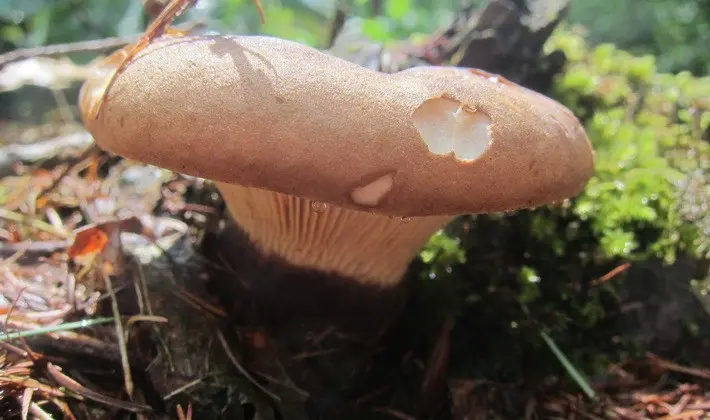
Family: Tapinella (Tapinellaceae).
Season: July – October.
Growth: alone.
Description:
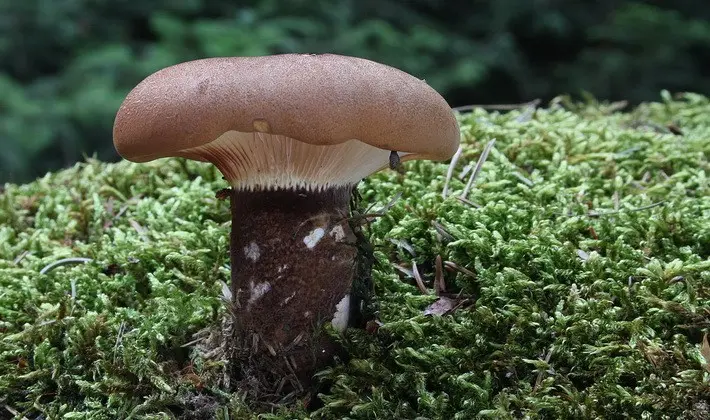
The hat is convex, thick, with a suede surface, brown.
The plates are descending, frequent, ocher-yellow.
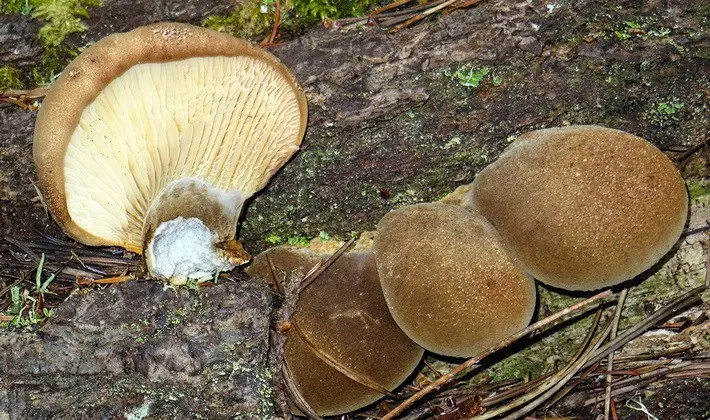
The pulp is melting, darkening on the cut, caustic.
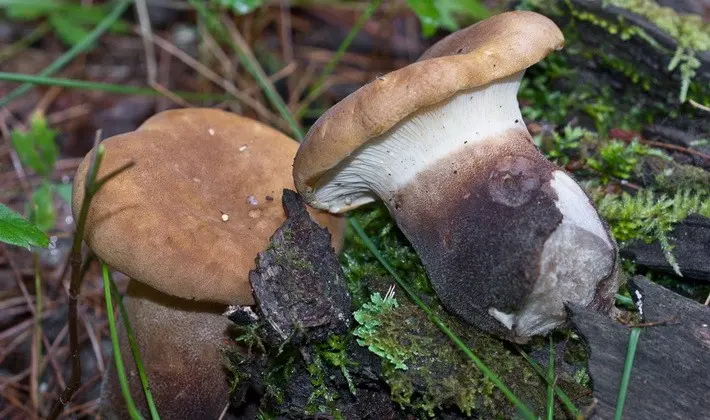
The leg is eccentric, curved, covered with a dark pile along its entire length.
Information about edibility is contradictory.
Ecology and distribution:
It grows in coniferous and mixed forests on stumps or fallen trunks of coniferous trees, mainly spruces and pines. In Our Country, it is distributed in the European part, in the Caucasus and in Western Siberia.









